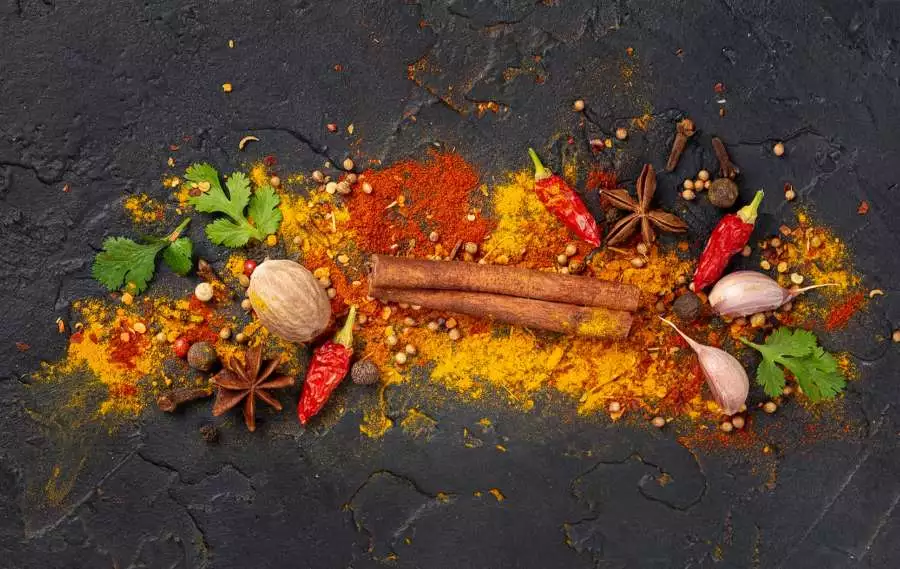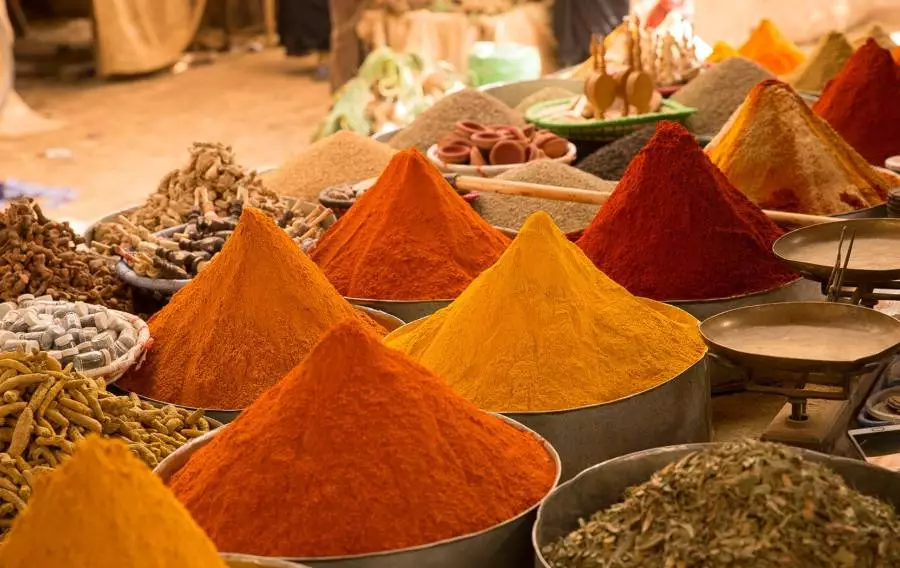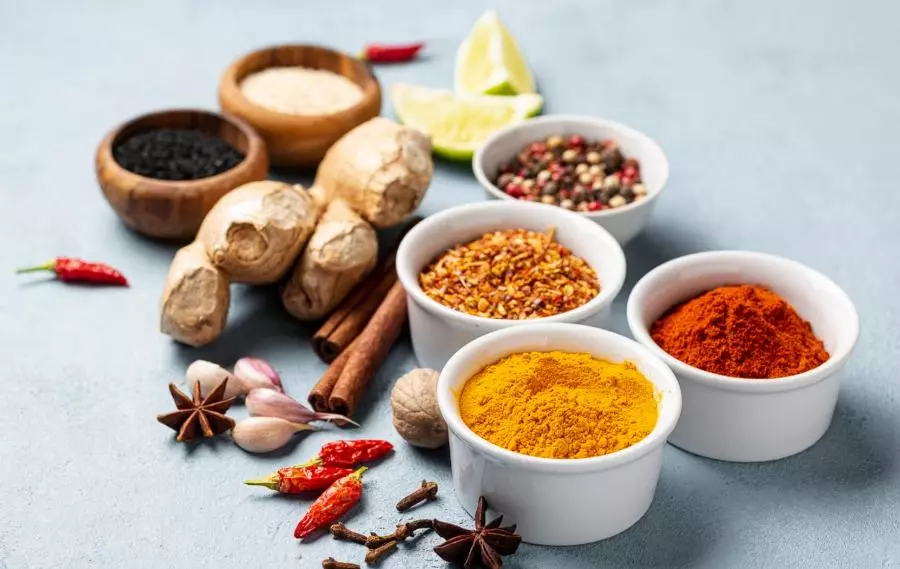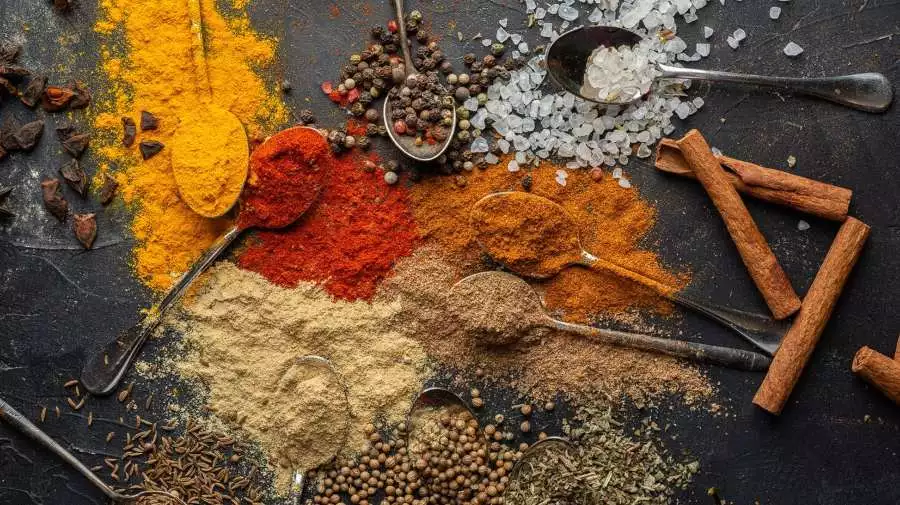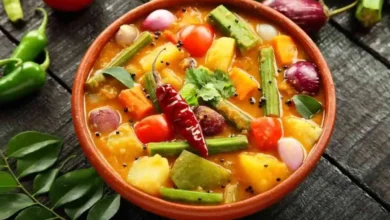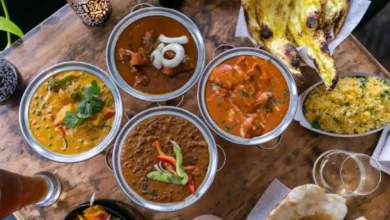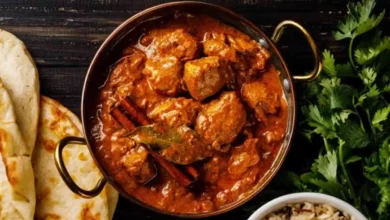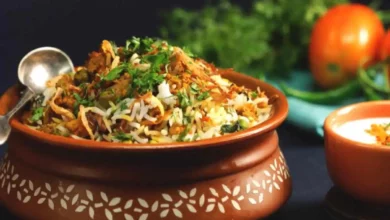30 Best Indian Spices
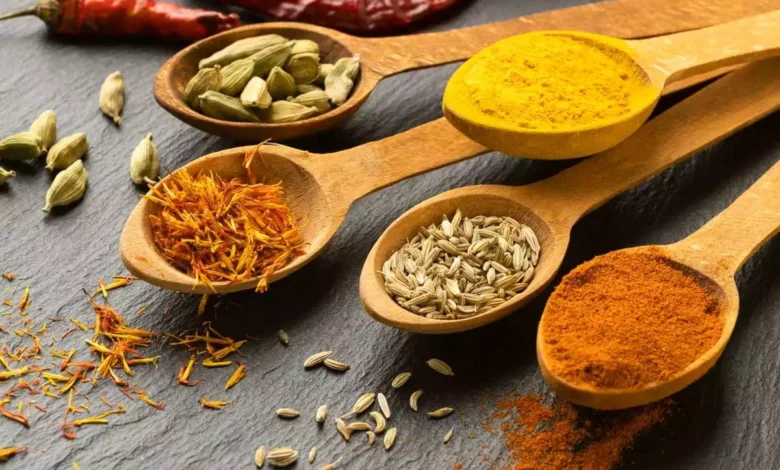
Introduction
Indian spices are the cornerstone of the nation’s gastronomy, renowned for their rich flavors and aromatic complexity. These spices are not just culinary ingredients; they are the soul of Indian cooking. In this comprehensive article, we delve into the captivating world of Indian spices, unraveling their historical significance, regional diversity, culinary versatility, health benefits, and much more. Let’s embark on a tantalizing journey through the incredible spectrum of Indian spices.
Table of Contents
The Rich History of Indian Spices
The history of Indian spices is a narrative of adventure, trade, and cultural exchange. For thousands of years, India’s spice trade has enticed merchants from around the world, creating intricate connections. Spices like black pepper, cardamom, and cinnamon were once so precious that they were referred to as “black gold.” These aromatic treasures played a pivotal role in the spice routes and the rise of empires, shaping global history.
The Importance of Indian Spices in Cuisine
Indian spices are the heartbeat of Indian cuisine. They infuse dishes with a complexity of flavors and aromas that are simply unmatched. The art of blending these spices in perfect harmony is what makes Indian cooking unique and irresistible. From biryanis adorned with fragrant spices to fiery curries that awaken the senses, Indian spices create a symphony of taste that captivates the palate.
The Top 10 Must-Have Indian Spices
Turmeric: The Golden Spice with Healing Powers
Turmeric, with its vibrant golden hue, is celebrated for its potent healing properties. Curcumin, the active compound in turmeric, is known for its anti-inflammatory & antioxidant effects. Beyond its therapeutic qualities, it forms the backbone of many Indian spice blends, adding a warm, earthy flavor to a multitude of dishes.
Cardamom: Fragrant Elegance and Culinary Versatility
Cardamom, available in green and black varieties, lends a fragrant, floral note to a wide range of Indian dishes. It is a key ingredient in the beloved chai tea and is also valued for its digestive benefits. Cardamom’s versatility shines in both sweet and savory recipes.
Cumin: Aromatic Seeds That Elevate Flavor
Cumin seeds, with their warm and nutty flavor, are a culinary gem. They play a crucial role in spice blends, lentil dishes, and curries. The earthy aroma of cumin is a hallmark of Indian cuisine.
Coriander: The Dual-Purpose Herb and Spice
Coriander is a versatile ingredient, found in both seed and leaf form. The seeds contribute citrusy and fresh notes to dishes, while the leaves, known as cilantro, are widely used in garnishes. Coriander is an essential component of curry powders, providing a balanced flavor profile.
Cloves: Small Yet Mighty Flavor Bombs
Cloves, with their sweet and spicy profile, pack a punch far beyond their size. These aromatic buds are often employed in Indian desserts and spice mixtures. Their inclusion in dishes elevates the overall flavor and adds a delightful warmth.
Cinnamon: The Sweet and Savory Wonder Spice
Cinnamon is a spice cherished for its sweet and warming character. It finds a place in both desserts and savory dishes, such as biryani or spiced rice. Cinnamon imparts a comforting sweetness and depth to the recipes it graces.
Red Chilies: Spice Up Your Life
Red chilies, varying in heat intensity, are the foundation of countless Indian curries and pickles. They come in various forms, from mildly pungent to scorching hot, allowing for a wide range of flavor options. Red chilies add an element of fire to dishes, awakening the taste buds.
Fenugreek: Bitterness with Health Benefits
Fenugreek, in the form of leaves and seeds, introduces a subtle bitterness to Indian cuisine. While the bitterness may be an acquired taste, fenugreek is believed to have various health benefits. It is often used in pickles and some regional curry recipes.
Mustard Seeds: Zesty Little Gems
Mustard seeds are zesty and versatile, making their presence known in Indian cuisine. They are commonly used for tempering, pickling, and adding zest to dishes, especially in North Indian cooking. The distinctive zing of mustard seeds sets them apart.
Asafoetida: The Unique Umami Enhancer
Asafoetida, although notorious for its pungent aroma, contributes a unique umami flavor to numerous Indian dishes, particularly in lentil recipes. This spice is a testimony to the diversity of flavors found in Indian cuisine.
The Regional Diversity of Indian Spices
India’s expanse and cultural diversity are reflected in its multifaceted array of spices. Each region boasts its own unique spice blends and culinary traditions, making a culinary tour of India a journey of discovery:
North India: Where Aromatic Blends Rule
Northern Indian cuisine is characterized by aromatic spice blends such as garam masala. These blends often feature a symphony of spices, including cardamom, cinnamon, and cloves. North Indian dishes are known for their richness and complexity.
South India: Fiery and Fragrant Flavors
South Indian cooking is renowned for its fiery curries flavored with spices like black mustard seeds and dried red chilies. The region’s cuisine is a celebration of bold flavors, where spices play a starring role.
East India: Unearthing Unique Spices
The eastern states of India bring forth distinctive spices and blends like ‘pach foron,’ a combination of five spices commonly used in Bengali cuisine. East Indian cuisine is a revelation of unique and aromatic flavors.
West India: Sweet and Spicy Delights
Western India presents a delightful contrast with the sweetness of spices like cinnamon and cloves, often featured in desserts and rice dishes. The combination of sweet and spicy flavors characterizes the culinary landscape of this region.
Culinary Uses of Spices
Indian spices play a multifaceted role in the kitchen, enhancing the flavor of dishes in various ways. Their culinary applications are as diverse as the spices themselves:
Spice Blends and Curry Powders: The Essence of Indian Cooking
Indian cooking often involves the creation of intricate spice blends and curry powders, such as the universally adored curry masala. These blends are the heart and soul of Indian dishes, setting the stage for complex, harmonious flavors.
Spices in Main Dishes: The Heart of Flavor
Indian spices like cumin, coriander, and turmeric form the essence of countless Indian dishes, from aromatic vegetable curries to rich, meat-based recipes. These spices contribute to the depth and character of each culinary creation.
Spices in Desserts: Sweet Temptations
Saffron, cardamom, and rose water are commonly featured in Indian desserts, imparting a touch of luxury and opulence to sweet delicacies. These spices elevate the sweetness of desserts and add a fragrant dimension.
Spices in Beverages: The Art of Chai and More
Indian spices extend their influence into beverages as well. The beloved chai tea is a prime example, blending spices like cardamom, cinnamon, and cloves with tea leaves. This beverage is an embodiment of warmth and comfort, often enjoyed throughout the day.
The Health Benefits of Indian Spices
Indian spices are not merely about flavor; they offer a spectrum of health benefits that have been recognized for centuries. Here are some notable examples:
Turmeric’s Curcumin: An Anti-Inflammatory Powerhouse
Turmeric, with its curcumin compound, boasts powerful anti-inflammatory and antioxidant properties. It is a versatile spice celebrated for its potential to combat inflammation and support overall well-being.
Cumin and Coriander: Digestive Allies
Cumin and coriander, in addition to their culinary appeal, are known for their digestive benefits. They are often used to alleviate digestive discomfort, reduce bloating, and promote gut health.
Cardamom for Oral Health and Beyond
Cardamom’s antimicrobial properties extend beyond the kitchen; they can help freshen breath and support oral health. This versatile spice adds an element of sophistication to both sweet and savory dishes.
Cinnamon’s Blood Sugar Control
Cinnamon may contribute to the regulation of blood sugar levels. This makes it a valuable addition to sweets, breakfast dishes, and beverages, offering both flavor and potential health benefits.
Cloves: Antioxidant Warriors
Cloves are rich in antioxidants, which play a crucial role in protecting cells from oxidative damage. Beyond their enticing flavor, cloves offer a dose of health-boosting compounds.
The Future of Indian Spices
As the world becomes increasingly aware of the charms of Indian spices, there is a growing emphasis on their sustainable production and environmental impact.
Sustainable Farming and Spices: Ensuring Their Legacy
The future of Indian spices is intricately connected to sustainable farming practices. These practices not only ensure the continued availability of these treasured spices but also protect the livelihoods of countless Indian farmers. Sustainability is a fundamental consideration for the longevity of this vibrant industry.
Where to Buy Authentic Indian Spices: A Guide
To fully appreciate the magic of Indian spices, it is essential to source them from authentic and reliable sources. Here’s a guide to help you navigate the journey of acquiring genuine Indian spices.
Tips for Storing Indian Spices: Preserve Their Potency
Proper storage is pivotal in maintaining the potency and flavor of Indian spices. Learn how to keep them fresh and fragrant, ensuring that they continue to enhance your culinary creations.
Cooking with Indian Spices: A Beginner’s Guide
For those new to Indian cooking, a beginner’s guide to cooking with Indian spices can be an invaluable resource. It offers tips and insights into how to introduce Indian spices into your dishes, making your culinary adventures more enjoyable and rewarding.
Delightful Recipes Featuring Indian Spices
Now that you’ve acquainted yourself with the diverse world of Indian spices, it’s time to put your knowledge into practice. Here are some delectable Indian recipes that showcase the magic of these spices:
Chicken Tikka Masala: A Culinary Classic
Chicken Tikka Masala is a beloved Indian dish that exemplifies the enchanting world of Indian spices. Tender chicken pieces are marinated in a flavorful blend of spices and then simmered in a creamy tomato sauce, creating a dish that’s rich, aromatic, and utterly satisfying.
Garam Masala-Spiced Chai Tea: The Perfect Brew
Discover the art of making the perfect cup of aromatic, spiced chai tea. This beloved Indian beverage is a delightful infusion of spices and tea leaves, resulting in a warm and comforting drink that’s adored across the globe.
Spicy Aloo Gobi (Potato and Cauliflower): Comfort Food with a Kick
Aloo Gobi is a classic North Indian dish that exemplifies how spices can elevate even the simplest of ingredients. Potatoes and cauliflower are sautéed with a medley of spices, resulting in a dish that’s both hearty and full of flavor.
Spice-Related Traditions and Festivals in India
Indian culture is deeply entwined with spices, and numerous traditions and festivals celebrate their significance. These events provide a cultural context for the culinary and historical importance of spices in India.
Conclusion: Savor the Enchantment of Indian Spices
Indian spices are more than just culinary ingredients; they are a tapestry of history, tradition, and the boundless world of flavor. Embrace the richness of Indian spices, explore their health benefits, and let them transport your culinary experiences to new heights. The enchantment of Indian spices awaits, inviting you to savor a journey that is as flavorful as it is fascinating.
FAQs:
Q1. Where can I buy authentic Indian spices?
You can find authentic Indian spices in Indian grocery stores, specialty spice shops, or through reputable online vendors.
Q2. Are Indian spices healthy?
Yes, many Indian spices offer health benefits, from anti-inflammatory properties to digestive aid. They are not only delicious but also good for you.
Q3. What is the best way to store Indian spices?
Store Indian spices in airtight containers away from heat, light, and moisture to maintain their freshness and flavor.
Q4. Can I use Indian spices in non-Indian dishes?
Absolutely! Indian spices can enhance the flavor of various international cuisines, so don’t hesitate to experiment.
Q5. Which Indian spice is the hottest?
Red chilies are known for their heat, with variations like the bhut jolokia and Carolina Reaper ranking among the hottest chili peppers in the world.
Related Articles
Indian Food – A Comprehensive guide
Indian Cuisine – An Aromatic Speciality
Indian Restaurants – Where and What To Eat
Master Indian Food Recipes — Become a PRO with 3 basic rules!!
5 OF The Most Delectable Indian Curries that never fail to impress

